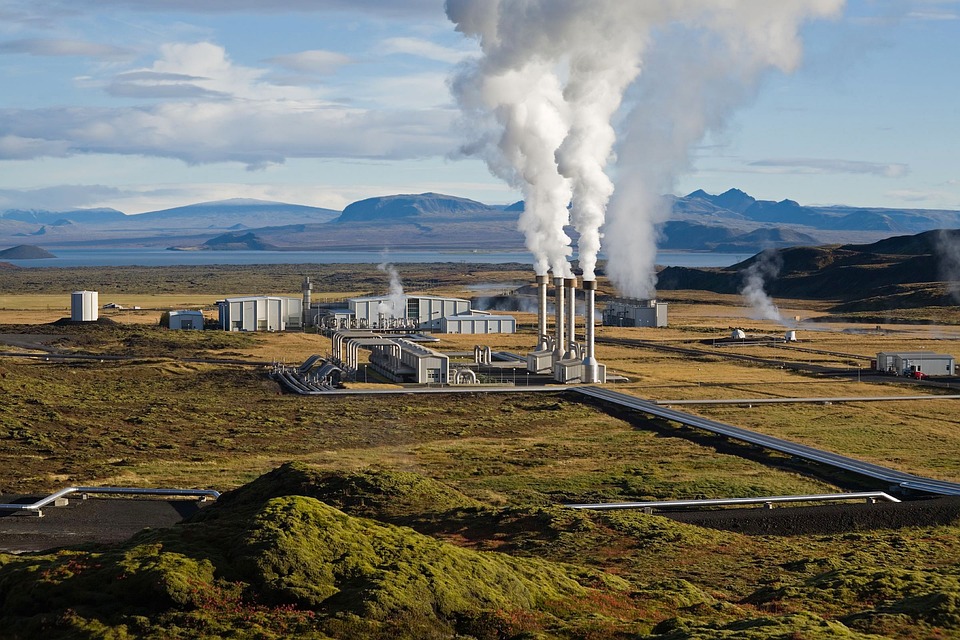The adoption of geothermal energy offers numerous benefits, making it a critical component of a
sustainable energy strategy:
Environmental Benefits
Low Greenhouse Gas Emission
Geothermal power plants emit significantly lower greenhouse gases compared to fossil fuel
plants. The emissions are primarily limited to water vapor and small amounts of gases such
as carbon dioxide and hydrogen sulfide. This characteristic helps mitigate climate change
and air pollution, promoting cleaner air and healthier communities. The reduced carbon
footprint associated with geothermal energy is vital for achieving international climate
agreements and targets, such as those outlined in the Paris Agreement.
Minimal Land Use
Geothermal plants have a small land footprint compared to other renewable energy sources
like solar and wind farms. This efficient use of land minimizes ecological disruption and
allows for dual land use, where agricultural or recreational activities can coexist with
energy production. The reduced land requirement also lowers the risk of habitat destruction,
helping to preserve local biodiversity and ecosystems.
Sustainable and Renewable
Geothermal energy is continually replenished by the Earth's internal heat, ensuring a
long-term and sustainable energy supply. Unlike solar and wind, which can be intermittent,
geothermal energy provides a reliable baseload power source, capable of generating
electricity consistently throughout the year. This reliability is crucial for meeting
constant energy demands and reducing reliance on fossil fuels during peak usage times,
thereby enhancing grid stability.
Economic Benefits
Job Creation
The geothermal industry creates jobs in construction, drilling, plant operation, and
maintenance. It also stimulates local economies through infrastructure development,
promoting economic growth in rural and underserved areas. These jobs often provide stable
employment opportunities with competitive wages. Additionally, training programs in
geothermal technology can equip local workers with valuable skills, further enhancing
workforce development in the region.
Energy Independence
Geothermal energy reduces dependence on imported fossil fuels, enhancing energy security and
stability. By diversifying the energy portfolio, countries can protect themselves from
volatile fossil fuel prices and geopolitical uncertainties, making energy supply more
predictable and secure. This energy independence contributes to national security, as
countries become less vulnerable to external market fluctuations and political instability
in oil-producing regions.
Cost Effective
Once a geothermal power plant is constructed, it has low operating and maintenance costs.
Geothermal energy is often cheaper than fossil fuels and other renewable energy sources over
the long term. The initial investment may be high, but the low-cost energy production and
potential for stable prices over decades contribute to its economic viability. Additionally,
the long lifespan of geothermal power plants—often exceeding 30 years—means that the upfront
costs can be amortized over a long period, resulting in lower electricity rates for
consumers.
Technological Advancements
Ongoing research and development in geothermal technology are continually improving the
efficiency and feasibility of geothermal energy. Enhanced geothermal systems (EGS) and other
innovative technologies aim to expand the geographic range where geothermal energy can be
harnessed, making it accessible to more communities. These advancements can lead to
increased energy production and reduced costs, further solidifying geothermal energy's role
in a sustainable energy future.
Potential for Multi-Use
Geothermal facilities can also provide multiple benefits beyond electricity generation, such
as direct heating applications, district heating systems, and even spa and recreational
opportunities. The utilization of geothermal energy for heating greenhouses and aquaculture
demonstrates its versatility and potential for integrated energy solutions that support
local economies and food production. By maximizing the benefits of geothermal resources,
communities can create more resilient and sustainable local economies.


